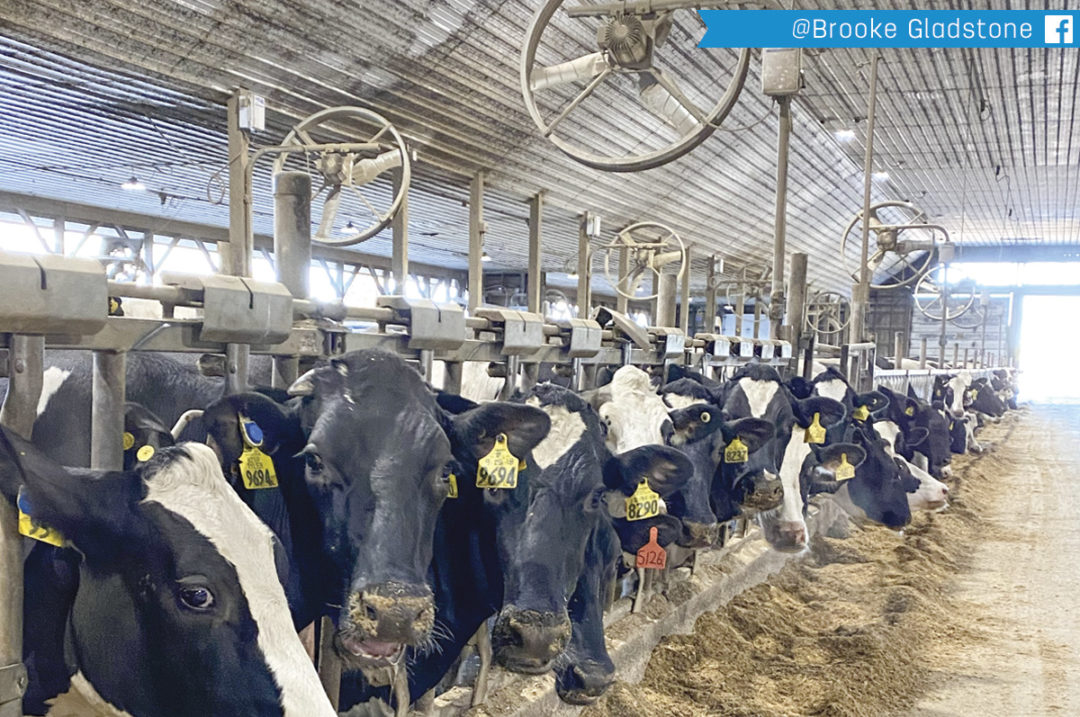Heat stress is a pervasive problem for dairy producers in Florida, where summer temperatures regularly tip over 90ºF, combined with a sticky 75% humidity. These types of conditions are routine in Florida, with 70% of the year exceeding conditions that induce heat stress in dairy cows. However, heat stress isn't limited to Florida, and it continues to be a problem facing many dairy producers. Cows across the U.S. are susceptible to heat stress and regularly suffer depressed production and fertility in summer months compared to the winter (albeit to a lesser extent in the Midwest and Northeast compared to the South).
Heat stress can be broadly defined as conditions that make it difficult for an animal to effectively dissipate heat to the environment and maintain normal body temperature, which is optimal for milk production. Heat stress is a problem that needs to be actively addressed in the dairy industry across the U.S.
In parallel, postpartum diseases in fresh cows also reduce milk production and fertility. Specifically, uterine diseases including metritis and endometritis occur in upward of 40% of fresh cows. Costs associated with reduced fertility, lower milk production, treatment and replacement animals are estimated between $700 million and $900 million each year in the U.S.
While standard antimicrobial treatments are implemented to treat uterine disease, these strategies do not reverse the reduced fertility observed in cows following disease – making it crucial for us to understand the underlying causes of disease in an attempt to reduce disease incidence. Uterine infections are caused by specific types of bacteria – Escherichia coli, Trueperella pyogenes, Fusobacterium necrophorum and Prevotella melaninogenica – which cause inflammation of the uterus and tissue damage. However, it is unclear why some cows develop disease and others remain healthy within the same pen. Recently, we asked the question if heat stress during the dry period could contribute to the development of uterine disease in fresh cows.
Production records from 2012-17 for 3,500 cows located at the University of Florida Dairy Research Unit were used to evaluate the incidence of metritis. During this period, all lactating cows were provided with heat abatement, including fans and soakers in the freestall. However, dry cows were routinely housed on pasture where heat abatement was limited to simple shade structures. The average daily temperature-humidity index (THI) for the warm season (April-September) was 74.3ºF and 60.8ºF in the cool season (October-March). Others have demonstrated that a THI greater than 68ºF will induce signs of heat stress in cows, showing that many cows are exposed to daily conditions of heat stress in Florida for most of the year.
As expected, the 305-day milk production was reduced by 1,073 pounds in multiparous cows that calved during the warm season compared to those that calved during the cool season. Of greatest relevance to our question, the data revealed that the incidence of clinical metritis significantly increased from 21.1% in the cool season to 24.2% in the warm season, suggesting that heat stress increased the incidence of metritis (Figure 1).

The increased incidences of metritis following heat stress could be due to compromised immune function or an increased abundance of bacteria in warm conditions. To answer this question, we performed an experiment by which we applied heat abatement to dry cows – using fans and sprinklers – and compared immune function and bacteria abundance in the vagina to cows that did not have access to fans or sprinklers.
Cows without metritis that received cooling during the dry period produced 27 pounds per day of milk more for the first 60 days of lactation compared to cows with metritis that did not receive heat abatement. In addition, heat abatement during the dry period did not affect bacteria abundance in the vagina but did alter the immune function of cows 21 days in milk. It is very likely that heat stress during the dry period alters the physiology of cows into lactation even if cows are receiving heat abatement using fans and sprinklers.
There is a growing body of evidence to suggest that heat stress of dry cows has negative implications for cow production, fertility and health status. It appears that carryover effects from the dry period must be considered when discussing the negative implication of heat stress in the dairy cow as it pertains to production and health traits. It is advisable, if possible, to provide dry cows with adequate heat abatement for as long as possible during the dry period to maximize productivity in cows and may also be appropriate for heifers and youngstock.









